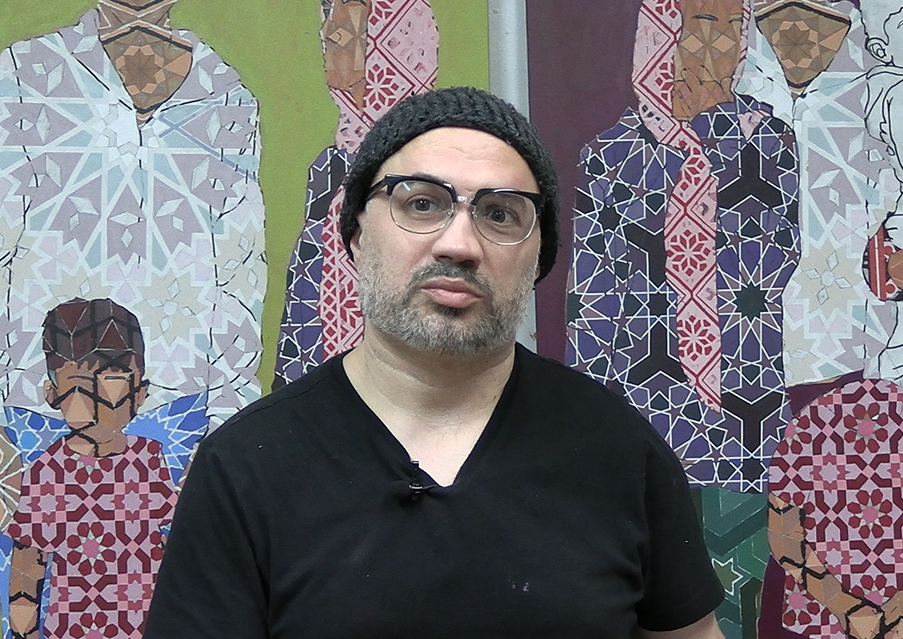
The art of representation
David Najib Kasir is on a mission. His goal is to remind society of the beauty, culture and innovations the Arab people have given to the world and to help tell the story of the many Middle Eastern people who have come to the United States to keep their families safe and build a better life. And he is doing it through some of the most eye-catching and thought-provoking murals and paintings found in the United States.
“Arabs are faced with a lot of negative connotations and narratives brought by American media,” Kasir explained during a visit to his Milwaukee studio. “I am trying to make people aware of the beauty. Whether it’s art designs, floral arrangements or math…math comes from the middle east…and I want people to know the contributions we have made to society.”
Much of his art features refugees from Middle Eastern communities that have been ravaged by the wars and conflicts like the ones in his family’s home of Aleppo. But instead of painting them in a realistic manner, he utilizes Moroccan and Zellige floral patterns and designs as both the background for his work and the means to depict the subjects.
“I have been surrounded by these patterns my whole life and I always wanted to use them in my art because they are so beautiful, but I didn’t know how,” Kasir stated. “But then the Syrian civil war started and I saw how the people were being depicted in western media it didn’t fit with my own knowledge and experience from when I lived in Syria and how I saw Milwaukee’s Arab community help refugee families get acclimated into their new country. That is when I knew how to use them.”
Another signature feature of Kasir’s work is the way he abstracts the faces or removes parts of the bodies of some of his subjects. Looking at the diptych he has created for Baird Center a Pattern of Families Divided by the Greater > Than and a Pattern of Families Divided by the Less < Than, some members of the family appear almost as outlines giving them an ethereal or ghost like appearance. He explained that one of the objectives for using this technique is to illustrate how refugees lose part of their culture and heritage when they assimilate into American culture. But there is a second important reason why he chose to take this approach.
“I really want people to identify themselves in the figures,” Kasir told us. “This whole country is a bunch of refugees but there is such a misconception of today’s refugee. These families actually have incredible success stories. They are our neighbors and the small business owners right down the street. So, this misconception is a whole misconception of the history of this country. I want people to look at these figures and by seeing themselves in them, maybe have a better understanding of the journey they took and the price they paid to keep their family as a whole through time and distance and maybe be able to see their own parents or grandparents who immigrated here and the love they had for their own children.”
A Pattern of Families Divided by the Greater > Than and a Pattern of Families Divided by the Less < Than (Diptyque) is part of the We Energies Foundation Art Collection located at Baird Center. David Najib Kasir is one of the thirty-three artists, most from Milwaukee, Wisconsin or with special ties to the area who have works featured in the collection. You can discover more about the artists and their works at https://bairdcenter.com/art-collection/.